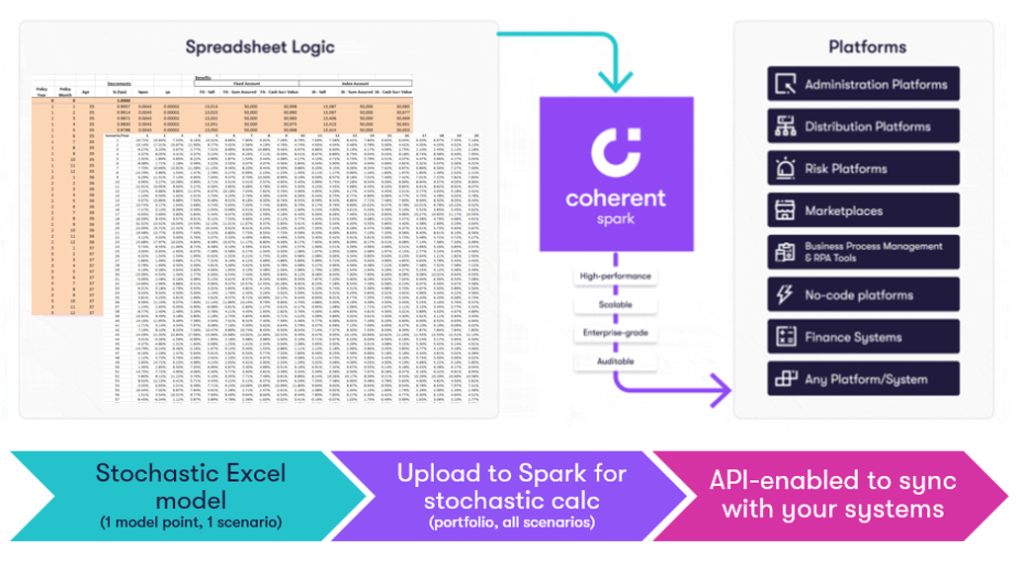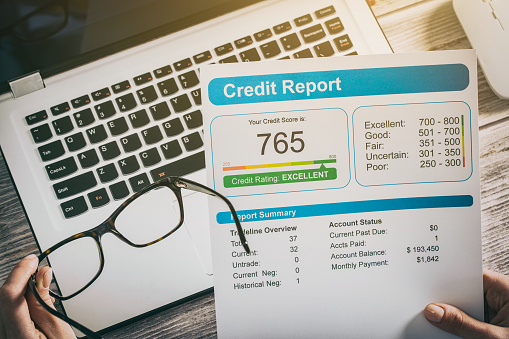Each year, the world emits about 51 billion tons of greenhouse gases into the atmosphere. According to the 2015 Paris Agreement, to meet the global warming target of 2.0°C (ideally within 1.5°C), the world needs to reduce the global greenhouse emission by half by 2030 and achieve net zero by 2050. To accelerate actions towards this goal, the 26th meeting of the Conference of Parties (COP26) in Glasgow in late 2021 brought together more than 120 world leaders to pledge actions against this ambition.1
There are two numbers you need to know about climate change. The first is 51 billion. The other is zero. Fifty-one billion is how many tons of greenhouse gases the world typically adds to the atmosphere every year. Zero is what we need to aim for.
Bill Gates, How To Avoid A Climate Disaster:The Solutions We Have And The Breakthroughs We Need
It is well noted that the 17 Sustainable Development Goals2 by the United Nations sets out goals for all countries to improve environmental, social, and economic wellbeing. Essentially, the key theme revolves around Environment, Social, Governance (ESG) which is used interchangeably with sustainability.
Adopting the right ESG technology to scale sustainability
Sustainability in business can be summarized into Profit, People and Planet (3Ps). Every company strives for Profit to be financially sustainable. While many have also embarked on Corporate Social Responsibility (CSR) initiatives to achieve People goals, most companies have yet to fully ascertain how they can operate without causing a strain on the planet.
For the business leaders reading this, once you have set your mind on meeting sustainability goals, using the right technology like Coherent Spark can serve as an enabler as you embark on the sustainability journey.
Embarking on a sustainability journey is not a small feat. ESG reporting is now mandated by many jurisdictions and companies need to comply to the new and yet ever-changing rules. In the case of green bonds issuance, the categorization and certification of sustainable bonds are significantly different globally, and efforts to standardize disclosure requirements have not been conclusive. Additionally, the upcoming Financial Impact Assessment would also impact businesses in the way it is required to report their business activities. Carbon taxes across jurisdictions also vary, e.g. Finland was the first country to introduce carbon tax back in 1990 and its carbon tax rate is now at €76 per ton; in Singapore, the current carbon tax of SGD 5 per ton is expected to rise to SGD 50-80 per ton in 2030; in the US, there is no carbon tax yet, but the proposed carbon tax is USD 20 per ton as part of “Build Back Better Plan” proposed by the Biden administration.

Furthermore, sustainable finance and the corresponding regulation reporting surrounding the financial services industry is also not an easy task to implement. The Task Force on Climate Related Financial Disclosures (TCFD) aims to develop credible climate risk related financial risk disclosures for use by companies, banks and investors in providing information to stakeholders. These disclosures help provide a reliable source of understanding to climate risk and would aid the financial services industry in integrating sustainability into their businesses.
Regulatory changes like these do not only pose implementation challenges for businesses, but also inevitably result in higher operating costs for businesses. Most importantly, this is sending a clear message to companies that sustainability is no longer a nice-to-have requirement – this is now a must-have. Navigating through nuts and bolts of sustainability in business is, however, not easy, and is now a key agenda item for many CEOs and C-suite executives.
Getting started on sustainability—Meeting carbon reporting standard
To get started on a sustainability journey, businesses need to first understand their carbon footprint, i.e., how much carbon footprint (also known as greenhouse gases) is the company emitting to the planet.
Each year, the world emits about 51 billion tons of greenhouse gases onto this planet. If businesses do not change the way they operate now, no country will be able to achieve net-zero position by 2050.
Whether a company is an MNC or SME, it is imperative for the company to understand that with the growing alertness for climate action, assessing its standing with respect to adopting ESG measures would be an important starting point. According to the Greenhouse Gas (GHG) Protocol, carbon reporting can be divided into three different scopes. It is mandatory to report Scope 1 and Scope 2 emissions, while reporting of Scope 3 is voluntary and its surveillance is a challenge.
- Scope 1 involves carbon emissions that are produced directly from a company and its controlled entities such as stationary combustion, mobile combustion, fugitive emissions, and process emissions.
- Scope 2 covers emissions that are produced indirectly from the generation of consumed energy purchased and used by the company, e.g., emissions generated by utility service provider.
- Scope 3 encompasses emissions that are not covered in the prior two scopes, those that occur in the value chain of the reporting company, in both upstream and downstream emissions. Companies interested in reducing their Scope 3 emissions tend to focus on reducing business travel, encouraging employees to work from home, using sustainable transport systems and cutting back on waste generation.
Utilizing technology to make ESG reporting easier and faster
To calculate carbon footprint, companies can refer to the Excel-based GHG Emissions Calculation Tool published by Greenhouse Gas Protocol3. The tool tracks and calculates Scopes 1,2 and 3 emissions across operations in a company. To connect this carbon footprint calculator to internal and external ESG reporting tool, companies can upload this Excel model to Coherent Spark, a no-code Excel-to-API platform for instant Application Programming Interface (API). The configuration process on Spark is as simple as mapping an “Xinput_XXX” to user input parameters and “Xoutput_XXX” to the required output using Excel’s name manager.
This would allow Spark to convert the logic in Excel (user inputs in orange and user outputs in grey in Fig 2 and 3 below) into API. These Excel-sourced APIs can then be connected to internal and external systems such as financial reporting, accounting, internal risk management, CRM, HR, and more.
With current rigid bespoke technology solutions, companies will find it challenging to keep up on the evolving ESG reporting landscape. However, using existing tools that everyone is already familiar with – such as the ubiquitous Excel – will allow companies to translate their proprietary complex ESG-related logic and calculations into APIs within moments with Coherent Spark.
In this case, Spark does not only speeds up the integration of carbon footprint calculator with the companies’ ESG reporting, but also makes it very convenient for them to reflect any changes and updates of ESG reporting standards by editing the Excel calculator before uploading to Spark for API.

Adhering to the principleof green software engineering
With the advent and proliferation of digital technology, software systems are also inadvertently forming a part of a rapidly growing carbon footprint. While software on its own does not consume energy or emit any harmful greenhouse gases, the development of software can be energy intensive. For instance, in a Harvard Business Review article4, it is stated that training a single neural network model today can emit as much carbon as five cars in their lifetimes. Additionally, the amount of computational power required to run large AI training models has been increasingly exponential.
If companies are aware of the carbon footprint they are generating in exchange for marginal improvement in results, it could help them make sound environmental decisions.
Coherent Spark can help reduce software building time and effort, reducing energy consumption in the developmental process by simply converting any existing Excel files into API. The Spark technology also reduces energy required to re-engineer or re-develop software thanks to its flexibility to accommodate new information readily.
How climate risk impacts businesses
According to a Swiss Re report5, the world could lose 10% economic value from climate risk. Therefore, it is imperative for everyone including businesses to act on it now. One example is to understand what constitutes climate risk.
Climate risk can be broken down into physical and transition risks.
Physical risks: Businesses are vulnerable to physical risks associated with climate change, e.g. natural disasters. Specifically for non-life insurance companies, natural disasters are tantamount to their survival as more frequent and more severe typhoons can cause property damages, resulting in higher-than-expected insurance claims hence higher losses. Additionally, rising temperatures can cause prolonged droughts in some regions and increased rainfall in others. Droughts and excessive precipitation can harm properties and human health. The most recent example of such physical risk was seen in the Europe 2022 heat wave. The increasing temperature across Europe resulted in wildfires and hundreds of heat-related deaths. In July 2022 alone, as firefighters battled more than 30 forest blazes across the country, most of Spain was issued a heat warning after the Carlos III Health Institute reported 360 heat-related deaths from causes like heat stroke.6 In such cases, insurers may raise insurance premiums for businesses at high-risk areas upon renewal, leading to higher operating costs for businesses.
Transition risks: Policy enactment on new or higher carbon tax could increase costs of businesses as we move towards low carbon economy. Increasing customers’ preference towards green products may also put carbon-intensive businesses at the risk of losing customers, especially the environmentally conscious ones.
Climate risk and its impactin the insurance industry
The impact of rising global temperatures and its repercussions as discussed above have proven to be a costly problem to insurance companies globally. The frequency and intensity of natural disasters such as hurricanes are seen to be increasing and have become hard to predict or project using historical estimates.

The property and human health risks brought about by climate change would directly affect the frequency and the severity of insurance claim amounts. This increase in claims might not have been expected by insurance companies during the product pricing process. To counter this, some insurance companies are seen refusing the provision of specific climate-related coverage to their customers.
Furthermore, other insurers are looking to increase their premiums for policyholders in high-risk areas. Increasing premiums beyond clients’ expectations would lead to customer dissatisfaction and reputation risks if consumers deem such an increase to be unfair. This could potentially result in an increase in lapse risk within the insurance company, and in the worst-case scenario bring about detrimental effects to an insurance company’s solvency.
Beyond the non-life insurance industry, the life insurance industry could also see detrimental impacts due to the health problems brought about by air pollution. Regions with high greenhouse gas emissions could see their population facing a lower quality of life and an increased risk for major critical illnesses such as lung cancer, stroke, heart attack, and other life-threatening conditions. These would also inadvertently result in an increase in premiums for insurance companies to retain their profit margin/solvency ratio, and could end up making such coverage unaffordable for the general population. If premiums are not reviewable, this could cause insurance companies to suffer from losses in these businesses.
How ESG technology accelerates the process of climate risk modeling
Apart from insurance companies, every company needs to do a full assessment of its own exposure to physical and transition risks to fully understand the impact of climate risk on its business. One way is for companies to assess these risks quantitatively by modelling them in Excel, specifically the impact of climate risk on its profitability under different scenarios.
Coherent Spark, a no-code Excel to API cloud-based platform, allows users to convert any calculation logic to API without the need to master any programming language.
Some companies further employ stochastic modeling techniques to quantify the uncertainty related to global warming and sea level changes on its business. To perform stochastic scenario analysis like Monte Carlo simulation, a user just needs to build the logic in Excel and upload it to cloud-based Spark platform to perform simulation runs to determine the tail risk of climate change on business operations.
On climate risk management, some companies may have acquired parametric insurance, of which the impact and efficiency of such risk mitigation tools on business can also be modelled in Excel. To further optimize their risk management strategy, companies can assess the effectiveness of these insurance solutions on risk exposure reduction by performing stochastic simulations on Spark platform, so they can determine the appropriate amount of insurance that is commensurate within its risk appetite.

Coherent Spark, a no-code Excel to API cloud-based platform, allows users to convert any calculation logic to API without the need to master any programming language. Users can then integrate this calculation to internal systems using API and create dashboard for management reporting. Further, Spark also enables calculation to run significantly faster (10x to 1000x) than Excel, creating time efficiency and saving computing power without compromising on accuracy.
Driving sustainable finance with green bonds
Beyond reducing waste and climate risk management to limit carbon footprint, companies are strongly urged to do more through sustainable finance. For businesses, sustainable finance translates to making informed financing and investment decisions while meeting ESG priorities at the same time.
Some companies have embarked on their ESG journey by issuing green bonds to finance projects that bring forth positive environmental and social benefits.
Green bond issuers include state-owned or linked entities (e.g., Fannie Mae and Indonesia Green Bond and Green Sukuk) and financial institutions (e.g. DBS Bank, European Investment Bank). In 2021, UK launched its own UK Green Gilt bond to help fund green projects across the country. The Green Gilt will be followed by the first standalone retail Green Savings Bonds in the world, issued by NS&I. The combination of these two products will give UK investors and savers the opportunity to take part in fighting against climate change while creating green jobs across the country.7
In addition to green bond issuance as a form of financing means, companies can also invest in green bonds to further their ESG mandate. Part of investment decision process can include reference to green bond indices, such as S&P Dow Jones Green Bond Index and Bank of America Merrill Lynch Bond Index, to evaluate performance of the green bonds.
Challenges facing the global green bond market
While issuing or investing in green bonds may seem to be the right and easy thing to do, agreeing on universal rules and standards as stated by Pictet Asset Management is one of the obstacles for sustainable debt to become mainstream.8
‘Greenwashing’ refers to the practice of channeling proceeds from green bonds towards projects or activities that have negligible environmental benefit or even worse—negative environmental impact.
At present, the categorization and certification of sustainable bonds are significantly different globally, while efforts to standardize disclosure requirements have not been conclusive. Furthermore, it is also found that green bonds tend to be less liquid than non-green bonds by virtue of institutional investors such as pension funds, insurance funds and sovereign wealth funds, having a higher tendency of “buying and holding” such sustainability-linked bonds. This phenomenon suggests that the secondary market for such securities might not be developed enough to allow for large trades without causing instability in the market price.
Another major concern globally involves sustainability credentials surrounding these ESG securities. A risk for such debt instruments largely revolves around the concept of ‘greenwashing’ – a term coined by environmentalist Jay Westerveld in 1986. ‘Greenwashing’ refers to the practice of channeling proceeds from green bonds towards projects or activities that have negligible environmental benefit or even worse – negative environmental impact. This phenomenon is largely due to the lack of transparency in regulations mandating debt instruments to be considered as part of ESG.
While these green bonds have been met with an increased interest, there is still no guarantee on the potential positive environmental impact these projects will bring.
One of the more contentious examples involves a green bond issued by an operator of the Three Gorges Corp in China, which has been consistently under the radar and criticized for contributing to pollution and damage down to the ecosystem that it surrounds. Additionally, green bonds issued by GDF Suez in 2014 were also found to have funded the Jirau Dam in Brazil, which caused detrimental environmental effects such as flooding in the nearby rainforest.9
More recently in 2022, Hong Kong released a retail green bond which would help fund nine types of projects to fight climate change and help transition Hong Kong into a low-carbon economy. While these green bonds have been met with an increased interest, there is still no guarantee on the potential positive environmental impact these projects will bring.
The Green Bond Principles issued by the International Capital Markets Association (ICMA)10 in June 2021 offers an internationally recognized set of voluntary guidelines on green bonds to bond issuers, investors, and other stakeholders. Other standards specific to sectors include Global Real Estate Sustainability Benchmark (GRESB) for real estate and construction industries. GRESB also recently partnered with the Singapore Exchange and UOB Asset Management to launch the iEdge-UOB APAC Yield Focus Green REIT Index, covering 50 higher-yield REITs that demonstrate relatively better environmental performance based on GRESB’s assessment11. Green bond issuers could also get their green bond rated by rating agencies, e.g. Moody’s rating from GB1 (Excellent) to GB5 (Poor).
Conclusion
The sustainability journey cannot be completed overnight. It is a long journey to navigate with the ever-changing regulations, evolving business landscape, and new technologies. Navigating through the details is complex, but it will be a key part of businesses going forward. The key is to evaluate how sustainability will impact businesses in the areas of Profit, People, and of course Planet.
For multinational companies, this could be an arduous undertaking. HSBC Bank, one of Europe’s largest lenders to oil and gas expanders, has set targets to reduce emissions from its lending to reach zero carbon footprint. However, it has recently come under scrutiny for its involvement in pouring over $111 billion into fossil fuel projects from 2016 to 2020, according to data from Rainforest Action Network. The lender has then agreed to phase down financing projects related to fossil fuels. In an article written by the group’s Chief Sustainability Officer12,HSBC has since then published science-based targets for Greenhouse Gases (GHG) emissions reduction in two main sectors: oil and gas, as well as power and utilities.
Regardless of the challenges that lie ahead, companies must take immediate steps to bring onboard ESG-related skills and to formulate strategies to achieve their sustainability goals. A key component of strategy is to make use of technology to scale their ESG expertise across functions and geographies quickly and timely to meet the upcoming challenges. Any measures to assess ESG positioning would help any company decide on its next steps and identify key areas to work on as they embark on their journey towards sustainability.
Coherent Spark can be an enabling tool as part of a company’s sustainability strategy. From carbon footprint tracking, climate risk management, sustainable finance, to ESG reporting, Spark is a flexible and powerful tool to marry a company’s ESG expertise with the right processes to achieve its sustainability priorities. As an industry-agnostic tool, Spark‘s Excel-to-API capability can also incorporate sustainability agenda of banks and capital markets into its operational processes and reporting.
Amidst inflationary pressures and heightening oil prices, companies should not put its sustainability agenda on hold. Rather, they should embrace sustainability using the right technology like Coherent Spark to stay ahead of the game. Along this journey, there isn’t a need to pick up a new programming language or create new bespoke technology solutions. To connect to internal and external ESG systems, Spark only requires users to code their current ESG logic and future sustainability plans in Excel to generate API.
Navigate your future with Coherent Spark. To learn more about how Coherent’s Spark technology can advance your ESG strategy, analyses, and reporting, contact us to schedule a discussion with our team.
References
- United Nations Climate Change 2021, United Nations Climate Change website, COP26 The Glasgow Climate Pact, accessed 20 July 2020, <https://unfccc.int/process-and-meetings/the-paris-agreement/the-glasgow-climate-pact-key-outcomes-from-cop26>
- United Nations Department of Economic and Social Affairs – Sustainable Development, United Nations website, The 17 Sustainable Development Goals by United Nations, accessed 20 July 2020, <https://sdgs.un.org/goals>
- Greenhouse Gas Protocol, Greenhouse Gas Protocol website, The GHG Emissions Calculation Tool, <https://ghgprotocol.org/ghg-emissions-calculation-tool>
- S. Podder, A. Burden, S. Singh, R. Maruca, 18 September 2020, “How Green Is Your Software?”, Harvard Business Review, accessed July 2020, <https://hbr.org/2020/09/how-green-is-your-software>
- “The Economics of Climate Change”, Swiss Re, 22 April 2021, accessed 20 July 2022, <https://www.swissre.com/institute/research/topics-and-risk-dialogues/climate-and-natural-catastrophe-risk/expertise-publication-economics-of-climate-change.html>
- “Heat Wave Across Europe Sparks Wildfires And Heat-Related Deaths”, Forbes.com, 17 July 2022, accessed 29 July 2022 <https://www.forbes.com/sites/carlieporterfield/2022/07/17/heat-wave-across-europe-sparks-wildfires-and-heat-related-deaths/?sh=19f83239597e>
- “Second UK Green Gilt raises further £6 billion for green projects”, Gov.uk, 21 October 2021, accessed 29 July 2022 <https://www.gov.uk/government/news/second-uk-green-gilt-raises-further-6-billion-for-green-projects>
- “Bonds that build back better”, Pictet Asset Management, accessed 20 July 2022, <https://am.pictet/en/globalwebsite/global-articles/2022/expertise/esg/ESG-bond-market-transformation/tab/Foreword>
- S. Malhotra, “Green bonds: Is it green finance or green-washing?”, 11 August 2020, accessed 20 July 2022, <https://www.downtoearth.org.in/blog/energy/green-bonds-is-it-green-finance-or-green-washing–72755>
- Green Bond Principles, International Capital Market Association website, June 2021, accessed 20 July 2022, <https://www.icmagroup.org/sustainable-finance/the-principles-guidelines-and-handbooks/green-bond-principles-gbp>
- “SGX and UOBAM partner to launch yield-focused iEdge-UOB APAC Green REIT index, supported by GRESB data”, 15 October 2021, accessed 20 July 2022, <https://www.uobgroup.com/uobgroup/newsroom/2021/uobam-apac-green-reit-index.page?path=data/uobgroup/2021/190&cr=segment>
- C Herweijer, Our financed emissions targets, HSBC website, 25 February 2022, accessed 20 July 2022, <https://www.hsbc.com/insight/topics/our-financed-emissions-targets>
Kay Shong
Director, Actuarial Modelling, Coherent
As Actuarial Director in Coherent, Kay is responsible for delivering Coherent solutions and advisory services to insurance companies in Asia. With more than 15 years of industry experience, her areas of expertise include business development, product development, pricing, customer insights, appointed actuary services, financial modelling and economic valuation of life insurance companies.
-
This author does not have any more posts.
Charmaine Ho
Actuarial Analyst
Charmaine is an Actuarial Analyst at Coherent. She has worked at insurance companies and brings with her experiences in life insurance valuation and reporting. At Coherent, Charmaine works on developing novel use cases of Spark, researching various new technologies/solutions and providing support for actuarial related projects. Her interest lies in actuarial valuation and ESG related solutions.
-
This author does not have any more posts.





